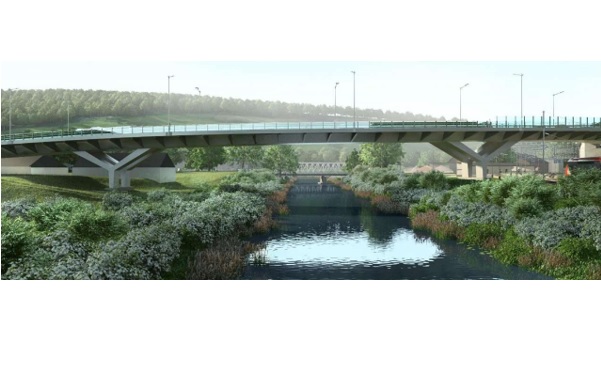 Pont Patton, Ettelbruck;
Pont Patton, Ettelbruck;
As an open and outward-looking country, Luxembourg often talks about “building bridges” with its partners and with other countries; it is also home to an array of actual bridges - 1,271 as of 2021.
In this series of articles, Chronicle.lu will offer an overview of a selection of bridges scattered across the Grand Duchy. This article (Part 2 of 2) looks at historic bridges.
Some of Luxembourg’s many bridges are admired for their architectural beauty, others have stood the test of time and witnessed some darker periods in the country’s history, including occupation by Nazi Germany during World War II. Bridges thus have historic and strategic significance. They are also border markers (similar to natural borders such as rivers).
Among the best-known historic bridges are (list continued from Part 1):
- Schiessentümpel is an iconic bridge and waterfall in the Mullerthal region (often referred to as Luxembourg’s Little Switzerland). It was built between March and July 1879, with the addition of the wooden balustrade later. The bridge has no practical function in terms of mobility in Luxembourg but is symbolic for the region and it marks the border between the municipalities of Waldbillig and Consdorf.
- Ieselsbréck (donkey bridge), located in the Moselle village of Ehnen, is a small and narrow stone bridge formed like a donkey’s back. In the past, it offered villagers an alternative route to their vineyards. Its exact age is unknown, but it has a certain medieval charm. The bridge goes across the Ehnerbach.
- Al Sauerbréck (old Sûre bridge) in Echternach, was one of the oldest bridges in the Grand Duchy, possibly dating back to Roman times. With four arches, this bridge connects Luxembourg and Germany. Various sources say the bridge was in a poor state in the 17th century. A major part of the bridge was destroyed in 1944, during the Second World War. The final blow was delivered during the Rundstedt offensive. A new Sauerbréck bridge was constructed in 1949, to replace it, with a wider central arch than its “predecessor” for better water flow in case of flooding. A statue representing the abbot of Echternach, Johannes Bertels (1544-1607) has a prominent placement on the bridge.
- Constructed in 1957, the Pont Büchler, located next to Luxembourg’s Central Station, underwent a complete reconstruction from 2019 to 2022 to support new tram lines connecting the central station to the new national stadium through the Bonnevoie district. The bridge's width was doubled from 20 to 42 metres to create a multimodal structure accommodating cars, cyclists, trams and pedestrians. This 100-metre-long bridge spans thirteen railway tracks, making the project highly complex in terms of coordination, safety around CFL infrastructures and maintaining traffic flow.
Luxembourg also has several cross-border bridges, for example the Viaduc vu Schengen (Schengen Viaduct). Construction lasted four years on this bridge, which is a whopping 600 metres long and 29 metres wide, with a total surface area of 17,000 m2. In November 2002, the motorway bridge opened to traffic, travelling between Germany and Luxembourg. It runs alongside the Moselle River, connecting the German A8 near Perl to Schengen via the A13 in Luxembourg. The cross-border bridge is co-financed by Luxembourg and Germany.








